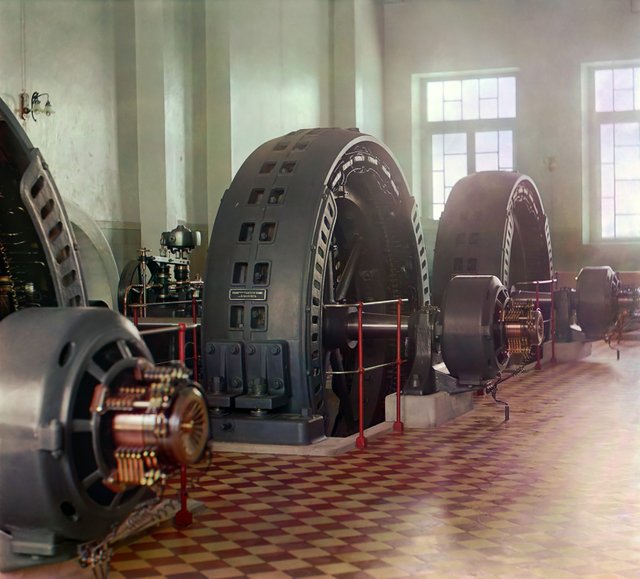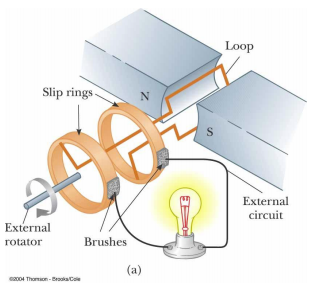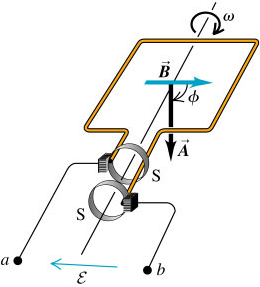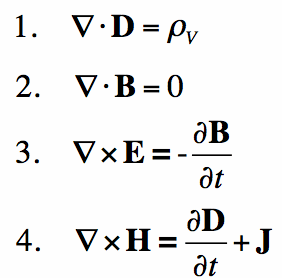Electricity & Photovoltaics
Electricity
An alternator is an electrical generator that converts mechanical energy to electrical energy in the form of alternating current. For reasons of cost and simplicity, most alternators use a rotating magnetic field with a stationary armature. Occasionally, a linear alternator or a rotating armature with a stationary magnetic field is used. In principle, any AC electrical generator can be called an alternator, but usually the term refers to small rotating machines driven by automotive and other internal combustion engines. Large 50 or 60 Hz three phase alternators in power plants generate most of the world's electric power, which is distributed by electric power grids. Alternators are also in Cars, they allow the Car to recharge its battery as it Drives, which is why if your Car battery dies you just have to drive around for a little while after getting it jumped in order for it to be able to start working regularly again, until you can get a new one.
This is a row of Alternators at a Power Plant

Faraday's law of induction is a basic law of electromagnetism predicting how a magnetic field will interact with an electric circuit to produce an electromotive force (EMF)—a phenomenon called electromagnetic induction. It is the fundamental operating principle of transformers, inductors, and many types of electrical motors, generators and solenoids.



Maxwell's equations are a set of partial differential equations that, together with the Lorentz force law, form the foundation of classical electrodynamics, classical optics, and electric circuits. These fields in turn underlie modern electrical and communications technologies. Maxwell's equations describe how electric and magnetic fields are generated and altered by each other and by charges and currents. They are named after the physicist and mathematician James Clerk Maxwell, who published an early form of those equations between 1861 and 1862.

Electrical Engineering Books:
http://webbut.unitbv.ro/Carti%20on-line/Fizica/Nicolaide.pdf
http://www.isu.edu.tw/upload/52/33/news/postfile_36558.pdf
Photovoltaics
Solar Technology
http://www.nsf.gov/news/special_reports/science_nation/sprayonsolar.jsp
http://inhabitat.com/hypersolar-increases-solar-efficiency-by-300-with-magnifying-film/
"Alexandre Edmond Becquerel created the world's first photovoltaic cell in 1839. In this experiment, silver chloride was placed in an acidic solution and illuminated while connected to platinum electrodes, generating voltage and current. Because of this work, the photovoltaic effect has also been known as the "Becquerel effect". The Photovoltaic effect, a process in which two dissimilar materials in close contact produce an electrical voltage when struck by light or other radiant energy. Light striking crystals such as silicon or germanium, in which electrons are usually not free to move from atom to atom within the crystal, provides the energy needed to free some electrons from their bound condition. Free electrons cross the junction between two dissimilar crystals more easily in one direction than in the other, giving one side of the junction a negative charge and, therefore, a negative voltage with respect to the other side, just as one electrode of a battery has a negative voltage with respect to the other. The photovoltaic effect can continue to provide voltage and current as long as light continues to fall on the two materials. This current can be used to measure the brightness of the incident light or as a source of power in an electrical circuit, as in a solar power system."
Solar Powered Alternators and Generators
http://www.ewp.rpi.edu/hartford/~lindgc/Project/FinalReport.pdf
http://www.sunrnr.com/uploads/PortableSolarGenerator101.pdf
https://www.princeton.edu/~ota/disk3/1978/7802/780214.PDF
http://self.org/SELF_White_Paper_-_Solar_vs_Diesel.pdf
http://acep.uaf.edu/media/87693/SolarDieselGridHandbook.pdf
https://www1.eere.energy.gov/femp/pdfs/26042.pdf
http://www1.eere.energy.gov/solar/review_meeting/pdfs/prm2008_white_infinia.pdf
Quantum Dots in Photovoltaics
http://cdn.intechopen.com/pdfs/34814/InTech-Silicon_quantum_dots_for_photovoltaics_a_review.pdf
A quantum dot solar cell is a solar cell design that uses quantum dots as the absorbing photovoltaic material. It attempts to replace bulk materials such as silicon, copper indium gallium selenide (CIGS) or CdTe. Quantum dots have bandgaps that are tunable across a wide range of energy levels by changing the dots' size. In bulk materials the bandgap is fixed by the choice of material(s). This property makes quantum dots attractive for multi-junction solar cells, where a variety of materials are used to improve efficiency by harvesting multiple portions of the solar spectrum.
Dye-Sensitized Photovoltaics
http://www.e-renewables.com/documents/Solar/Dye-sensitized%20photovoltaic%20cells.pdf
A dye-sensitized solar cell (DSSC, DSC or DYSC) is a low-cost solar cell belonging to the group of thin film solar cells. It is based on a semiconductor formed between a photo-sensitized anode and anelectrolyte, a photoelectrochemical system. The modern version of a dye solar cell, also known as the Grätzel cell, was originally co-invented in 1988 by Brian O'Regan and Michael Grätzel at UC Berkeley and this work was later developed by the aforementioned scientists at the École Polytechnique Fédérale de Lausanne until the publication of the first high efficiency DSSC in 1991.
Carrier Multiplication in Photovoltaics
In solar cell research, carrier multiplication is the phenomenon wherein the absorption of a single photon leads to the excitation of multiple electrons from the valence band to conduction band. In the theory of a conventional solar cell, each photon is only able to excite one electron across the band gap of the semiconductor, and any excess energy in that photon is dissipated as heat. In a material with carrier multiplication, high-energy photons excite on average more than one electron across the band gap, and so in principle the solar cell can produce more useful work.
Colloids in Photovoltaics
Thiols in Photovoltaics
http://www.light.utoronto.ca/edit/files/publications/2008/barkhouse_2008_1.pdf
Nanocrystal Acid Treatments in Photovoltaics
https://zenodo.org/record/1133/files/post-deposition-Nanotechnology-revised2.pdf
Photoelectrochemical cells
http://gcep.stanford.edu/pdfs/hydrogen_workshop/MacQueen.pdf
Photoelectrochemical cells or PECs are solar cells that produce electrical energy or hydrogen in a process similar to the electrolysis of water.
Thermophotovoltaic Cells
Thermophotovoltaic (TPV) energy conversion is a direct conversion process from heat to electricity via photons. A basic thermophotovoltaic system consists of a thermal emitter and a photovoltaic diode cell.
http://web.ics.purdue.edu/~pbermel/pdf/Celanovic11.pdf
http://jxcrystals.com/publications/40PVSC_Fraas_Manuscript%207-21-2014.pdf
http://calhoun.nps.edu/bitstream/handle/10945/1170/04Jun_Davenport.pdf?sequence=1
Micro-Thermophotovoltaic Cells
Dual-Thermophotovoltaic Cells
http://cpb.iphy.ac.cn/fileup/PDF/2013-10-108402.pdf
Thermophotovoltaic Monolithic Interconnected Modules
http://ntrs.nasa.gov/archive/nasa/casi.ntrs.nasa.gov/20030113048.pdf
Photovoltaic Design
http://www.uccs.edu/~rtirado/PV_Resources.pdf
Geometrical Photovoltaic design for shade tolerance
http://arxiv.org/ftp/arxiv/papers/1303/1303.4604.pdf
Photovoltaic Materials:
Amorphous silicon (a-Si) is the non-crystalline form of silicon used for solar cells and thin-film transistors in LCD displays. Used as semiconductor material for a-Si solar cells, or thin-film silicon solar cells, it is deposited in thin films onto a variety of flexible substrates, such as glass, metal and plastic. Amorphous silicon cells generally feature low efficiency, but are one of the most environmentally friendly photovoltaic technologies, since they do not use any toxic heavy metals such as cadmium or lead.
http://www.solarhome.ru/downloads/pv/a-Si_Advantages.pdf
Gallium arsenide (GaAs) is a compound of the elements gallium and arsenic. It is a III-V direct bandgap semiconductor with a zinc blende crystal structure. Gallium arsenide is used in the manufacture of devices such as microwave frequency integrated circuits, monolithic microwave integrated circuits, infrared light-emitting diodes, laser diodes, solar cells and optical windows.
http://www.nrel.gov/docs/fy13osti/57902.pdf
https://mundaylab.umd.edu/wp-content/uploads/JournalOfPV_20121.pdf
Cadmium telluride (CdTe) is a stable crystalline compound formed from cadmium and tellurium. It is mainly used as the semiconducting material in cadmium telluride photovoltaics and an infrared optical window. It is usually sandwiched with cadmium sulfide to form a p-n junction solar PV cell. Typically, CdTe PV cells use a n-i-p structure.
http://www.ijcea.org/papers/290-A00012.pdf
Copper indium gallium (di)selenide (CIGS) is a I-III-VI2 semiconductor material composed of copper, indium, gallium, and selenium. The material is a solid solution of copper indium selenide (often abbreviated "CIS") and copper gallium selenide. It has a chemical formula of CuInxGa(1-x)Se2 where the value of x can vary from 1 (pure copper indium selenide) to 0 (pure copper gallium selenide). CIGS is a tetrahedrally bonded semiconductor, with the chalcopyrite crystal structure, and a bandgap varying continuously with x from about 1.0 eV (for copper indium selenide) to about 1.7 eV (for copper gallium selenide).
http://depts.washington.edu/uwcei/wordpress/wp-content/uploads/2014/04/PVcelldisplaycards.pdf
Concentrator photovoltaics & High concentrator photovoltaics
Concentrator photovoltaics (CPV) is a photovoltaic technology that generates electricity from sunlight. Contrary to conventional photovoltaic systems, it uses lenses and curved mirrors to focus sunlight onto small, but highly efficient, multi-junction (MJ) solar cells. In addition, CPV systems often use solar trackers and sometimes a cooling system to further increase their efficiency.[2]:30 Ongoing research and development is rapidly improving their competitiveness in the utility-scale segment and in areas of high solar insolation. This sort of solar technology can be thus used in smaller areas. Especially systems using high concentrator photovoltaics (HCPV), have the potential to become competitive in the near future. They possess the highest efficiency of all existing PV technologies, and a smaller photovoltaic array also reduces the balance of system costs. Currently, CPV is not used in the PV roof top segment and far less common than conventional PV systems. For regions with a high annual direct normal irradiance of 2000 kilowatt-hour (kWh) per square meter or more, the levelized cost of electricity is in the range of $0.08–$0.15 per kWh and installation cost for a 10-megawatt CPV power plant was identified to lie between €1.40–€2.20 per watt-peak (Wp).
http://cdn.intechopen.com/pdfs-wm/32594.pdf
http://www.isetc.org/English/Archives/201010/Presentations/ISETC-2010-Oct20-Phil_Metz.pdf
http://gcep.stanford.edu/pdfs/solar_workshop_10_04/SolarKing2004.pdf
Concentrated solar power (also called concentrating solar power, concentrated solar thermal, and CSP) systems generate solar power by using mirrors or lenses to concentrate a large area of sunlight, or solar thermal energy, onto a small area. Electricity is generated when the concentrated light is converted to heat, which drives a heat engine (usually a steam turbine) connected to an electrical power generator or powers a thermochemical reaction.
Photonics is the science of light (photon) generation, detection, and manipulation through emission, transmission, modulation, signal processing, switching, amplification, and detection/sensing. Though covering all light's technical applications over the whole spectrum, most photonic applications are in the range of visible and near-infrared light.
http://www.irena.org/DocumentDownloads/Publications/RE_Technologies_Cost_Analysis-CSP.pdf
http://www.nrel.gov/docs/fy01osti/28751.pdf
Photonic Integrated Circuits
A photonic integrated circuit (PIC) or integrated optical circuit is a device that integrates multiple (at least two) photonic functions and as such is similar to an electronic integrated circuit. The major difference between the two is that a photonic integrated circuit provides functionality for information signals imposed on optical wavelengths typically in the visible spectrum or near infrared 850 nm-1650 nm.
http://www.photonics.ntua.gr/OptikaDiktyaEpikoinwnias/Lecture_6_Integration.pdf
http://optoelectronics.ece.ucsb.edu/sites/default/files/shared/06387568.pdf
Hi,
Your post is a collection of copy pasting.
The entire electricity section is originating from these three Wikipedia pages: 1, 2 and 3.
The photovoltaic part is also extracted from Wikipedia and Britannica.
The quantum dot stuff is from Wikipedia.
And so on... mostly everything is wikipedia-extracted.
Copy pasting without properly citing the sources is not great. I would have rather written a few original paragraphs, with some references to the original articles (and not the plethora of links you mention) and initiate a discussion.